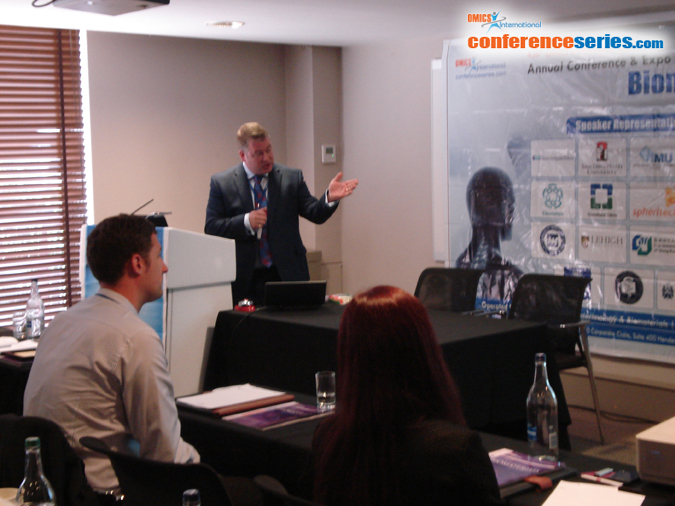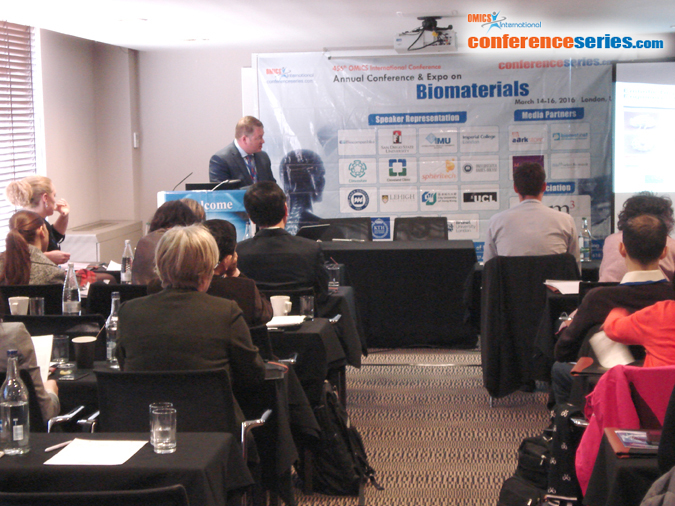
Andrew Lewis
Biocompatibles UK Ltd, UK
Title: Encapsulated mesenchymal stem cells promote local neoangiogenesis by a paracrine effect
Biography
Biography: Andrew Lewis
Abstract
We have taken human mesenchymal stem cells (hMSCs) that have been genetically engineered to produce Glucagon-like Peptide-1 (GLP-1) fusion peptide and encapsulated them within an alginate microcapsule to provide immunoprotection (CellBeads). The CellBeads were evaluated in a range of models of cardiovascular disease in order to ascertain if the implanted cells could illicit a beneficial therapeutic effect through the secretion and localised release of paracrine factors from hMSCs. In models of Acute Myocardial Infarction (AMI), CellBeads were infused intraarterially, in either a swine embolisation model of left ventricular dysfunction [1], or balloon occlusion models of moderate and severe acute myocardial infarction, with histological analyses and effects on functional recovery compared with relevant controls [2,3]. In a model of Vein Graft Disease (VGD), CellBeads were applied periadventially around a swine vein-into-artery interpositon graft and the effect on neointiamal formation and adventitial angiogenesis evaluated [4]. To evaluate potential application in Critical Limb Ischemia (CLI), the therapeutic activity of perivascular transplantation of CellBeads was assessed in an immunocompetent mouse model of limb ischemia [5]. In each of the models, implantation of the CellBeads was associated with notable functional improvement due to sustained delivery of locoregional paracrine factors secreted from the hMSCs, that supports the potential use of the technology in treatment of these disease states. Moreover, in each case there was an additional statistically significant increase in new blood vessels formation. This was identified as a consequence of Vascular Endothelial Growth Factor A (VEGF-A) secretion from the hMSCs.



